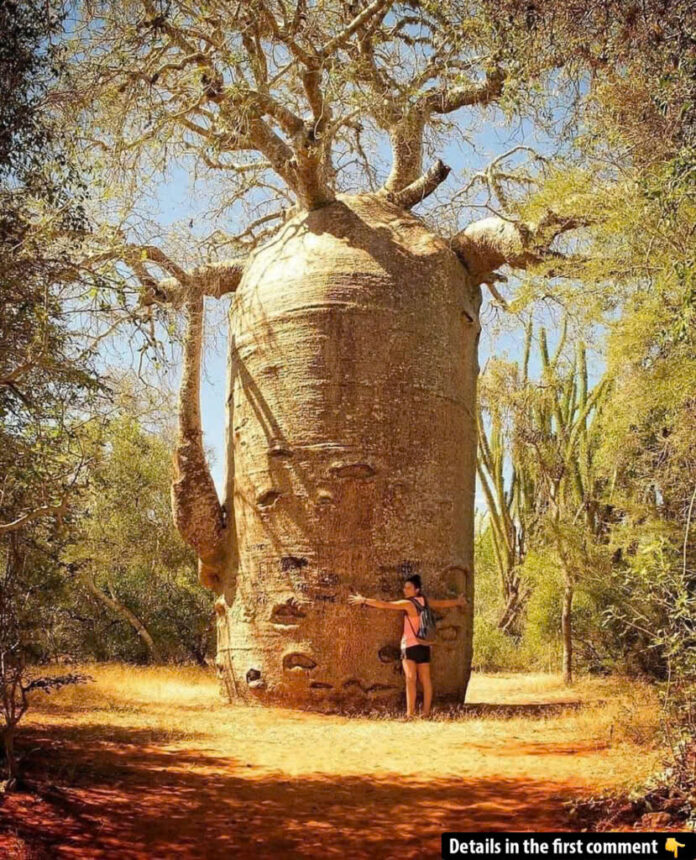For centuries, a peculiar giant has stood watch over Africa’s savannas – the baobab tree, affectionately known as the “upside-down tree.” With its massive trunk reaching towards the sky and branches resembling roots, this ancient guardian holds stories of survival, cultural heritage, and the delicate balance between nature and humanity.
The Mysterious Upside-Down Giant
Legend tells of a time when the baobab stood proud and tall, its vanity drawing the attention of the gods themselves. Displeased by its arrogance, they uprooted the mighty tree and replanted it upside down, teaching it a lesson in humility that would echo through generations.

But beyond the legend lies a marvel of natural engineering. These giants can grow up to 100 feet tall, their trunks spanning an incredible 98 feet in circumference. Some specimens have witnessed over 1,500 years of history, making them living monuments to Africa’s past.
Nature’s Water Tower

In the harsh African climate, the baobab has evolved to become nature’s own water reservoir. Its massive trunk can store up to 31,700 gallons of water, sustaining both itself and the surrounding wildlife through lengthy droughts. When water becomes scarce, it sheds its leaves and continues to photosynthesize through its trunk and branches – a remarkable adaptation that ensures its survival.
A Tree of Many Faces

The baobab family, known scientifically as Adansonia, has spread its roots across three continents. The African Baobab (Adansonia digitata) dominates the savannas from Senegal to Somalia. Madagascar hosts six unique species, including the endangered Grandidier’s Baobab. Even Australia has its own variety, the “boab,” distinguished by its bottle-shaped trunk and night-blooming flowers.
Guardian of Life and Culture

The baobab truly earns its nickname as the “Tree of Life.” Its presence creates a miniature ecosystem, providing shelter for birds, bats, and monkeys in its branches, while elephants feast on its bark and fruit. Local communities have long recognized its value, using every part of the tree:
- The fruit, rich in vitamin C and antioxidants, supports immune health
- The bark yields strong fibers for rope and cloth
- The leaves provide nutritious food and medicine
- The seeds produce omega-rich oil for cooking and cosmetics
Sacred Sanctuaries

Today, these majestic trees can be witnessed in some of Africa’s most breathtaking locations. The Avenue of the Baobabs in Madagascar offers a stunning display of thousand-year-old specimens. Botswana’s Chapman’s Baobab has guided travelers for generations. From Tanzania’s Tarangire National Park to Australia’s Kimberley region, these ancient sentinels continue to captivate visitors with their unique beauty and rich history.
Video
Legacy of Resilience

The baobab stands as more than just a tree – it represents the intricate relationship between nature and human culture. In an era of environmental challenges, these ancient giants remind us of nature’s resilience and the importance of preserving our natural heritage. Their story is one of adaptation, survival, and the timeless connection between the land and its people.

As climate change threatens ecosystems worldwide, the baobab’s lessons in survival become increasingly relevant. These remarkable trees show us that with adaptation, resilience, and respect for natural balance, life can flourish even in the harshest conditions.

